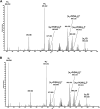Electrospray Mediated Localized and Targeted Chemotherapy in a Mouse Model of Lung Cancer
- PMID: 33959011
- PMCID: PMC8093875
- DOI: 10.3389/fphar.2021.643492
Electrospray Mediated Localized and Targeted Chemotherapy in a Mouse Model of Lung Cancer
Abstract
Background: An advanced stage, centrally localized invasive tumor is a major cause of sudden death in lung cancer patients. Currently, chemotherapy, radiotherapy, laser ablation, or surgical resection if possible are the available state-of-the-art treatments but none of these guarantee remedy or long-term relief and are often associated with fatal complications. Allowing localized chemotherapy, by direct and confined drug delivery only at the tumor site, could be a promising option for preoperative down staging or palliative therapy. Here we report the localized and targeted application of intra tumor delivery of chemotherapeutics using a novel device based on the principle of electrospray. Methods: C57BL/6J mice were injected with Lewis lung carcinoma cells subcutaneously. After 15 days, the animals were anesthetized and the tumors were exposed by skin incision. Tumors were electrosprayed with 100 µg cisplatin on days 0 and 2, and tumor volumes were measured daily. Animals were sacrificed on day 7 after the first electrospray and tumors were analyzed by immunohistochemistry. Results: In this proof-of-concept study, we report that the tumor volume was reduced by 81.2% (22.46 ± 12.14 mm3) after two electrospray mediated Cisplatin deliveries, while the control tumor growth, at the same time point, increased by 200% (514.30 ± 104.50 mm3). Moreover, tunnel and Caspase-3 positive cells were increased after Cisplatin electrospray compared to other experimental groups of animals. Conclusion: Targeted drug delivery by electrospray is efficient in the subcutaneous mouse model of lung cancer and offers a promising opportunity for further development toward its clinical application.
Keywords: coulomb repulsion; electrospray; localized and targeted therapy; localized tumor treatment; novel cancer treatment.
Copyright © 2021 Ruzgys, Böhringer, Dokumaci, Hari, Schürch, Brühl, Schürch, Szidat, Riether, Šatkauskas, Geiser, Hradetzky and Gazdhar.
Conflict of interest statement
The authors declare that the research was conducted in the absence of any commercial or financial relationships that could be construed as a potential conflict of interest.
Figures






References
LinkOut - more resources
Full Text Sources
Other Literature Sources
Research Materials

